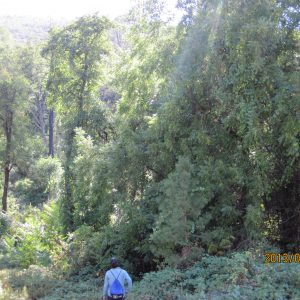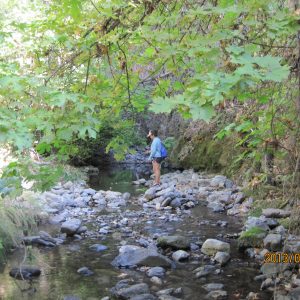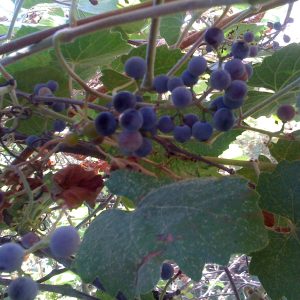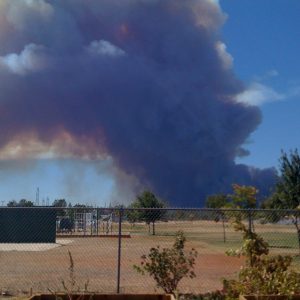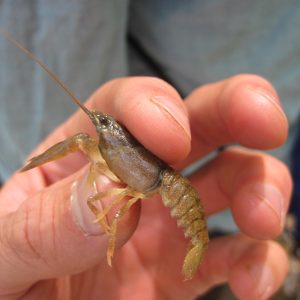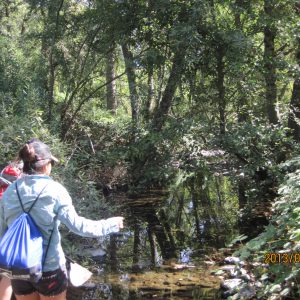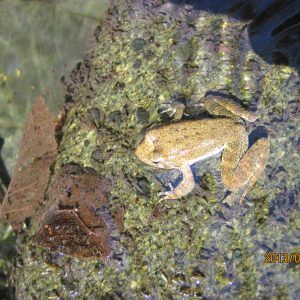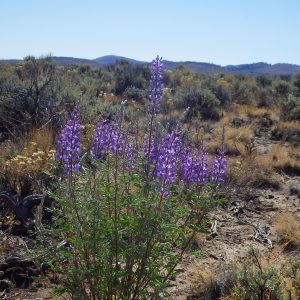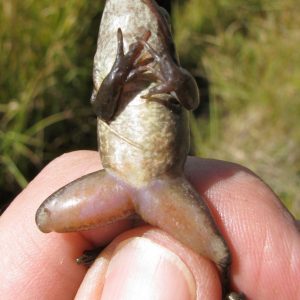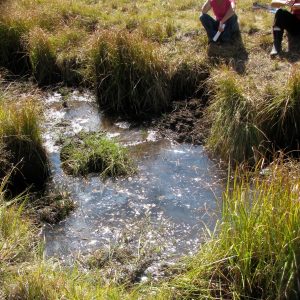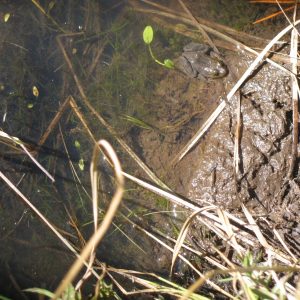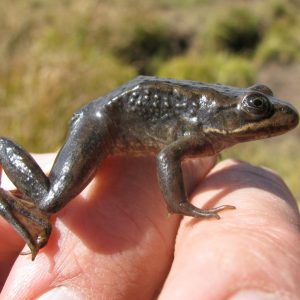This past month I’ve had the opportunity to experience a few more miscellaneous projects and pursuits. I’ve begun learning to use GIS software which so far is reasonably straight-forward. Out in the field I’ve also been tackling some wildlife projects that aim to save the lives of various critters that may fall victim to the seemingly innocuous presence of watering holes and fences.
My first project focused on the pronghorn antelope in the area which are restricted in their movements by the thousands of miles of fencing that covers the state of Wyoming. For the most part, fences are designed to contain cattle so when possible, it is best to use a design that keeps cows in but allows antelope to pass through freely. Since pronghorn tend to be significantly more nimble than their bovine brethren, they prefer to pass under the fence which can sometimes be less than 8 inches above the ground. My job was to measure the height of the top and bottom wires as well as record the type of fencing. Most fencing here is barbed so it is important for the bottom wire to be smooth in order for the antelope to squeeze beneath it without injuring themselves. The state also has a history of extensive sheep raising which would also be able to get under gaps in the fence. Consequently, some old fencing is still exists that prevents antelope from crossing and any such fence needs to be identified so it can be replaced. Incorrect fencing can result in fatalities as antelope become entangled in the wire.
Although using a meter stick isn’t necessarily thrilling, the roads along the fence tend to be muddy and undeveloped so it did afford me another chance to use the winch. For me, any day with a vehicular challenge is a good day. Unfortunately, the excitement of being stranded in the middle of nowhere doesn’t perfectly carry over to video format so I added some electronic music to create some flare. Also notice I put gloves on before operating the winch. Safety first, children.
Getting stuck in the mud is messy business. Lucky for me, having boots made out of 90% mud is very fashionable this year.
I knew my boss would be jealous if I didn’t include him in all the fun so I made sure to track several pounds of liquid dirt into his truck. Don’t tell him though. I’d prefer it to be a surprise.














